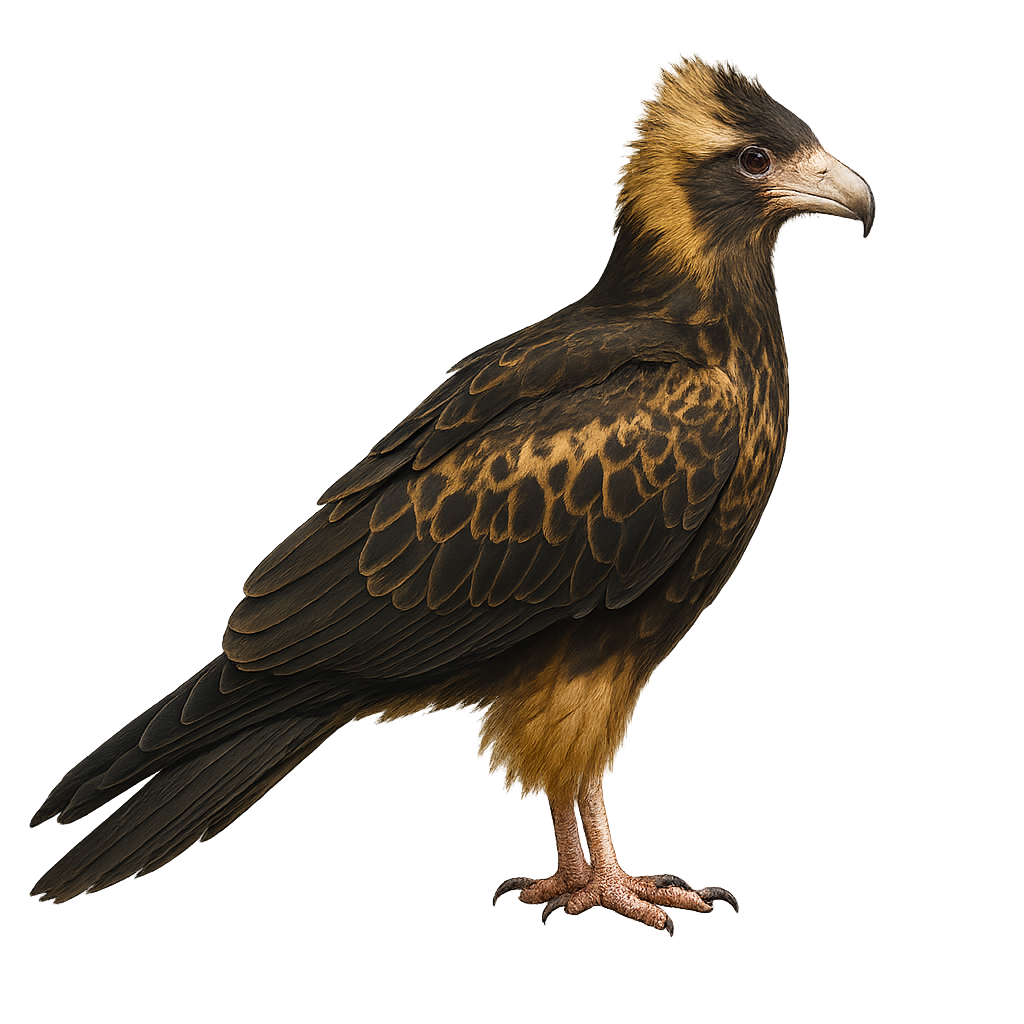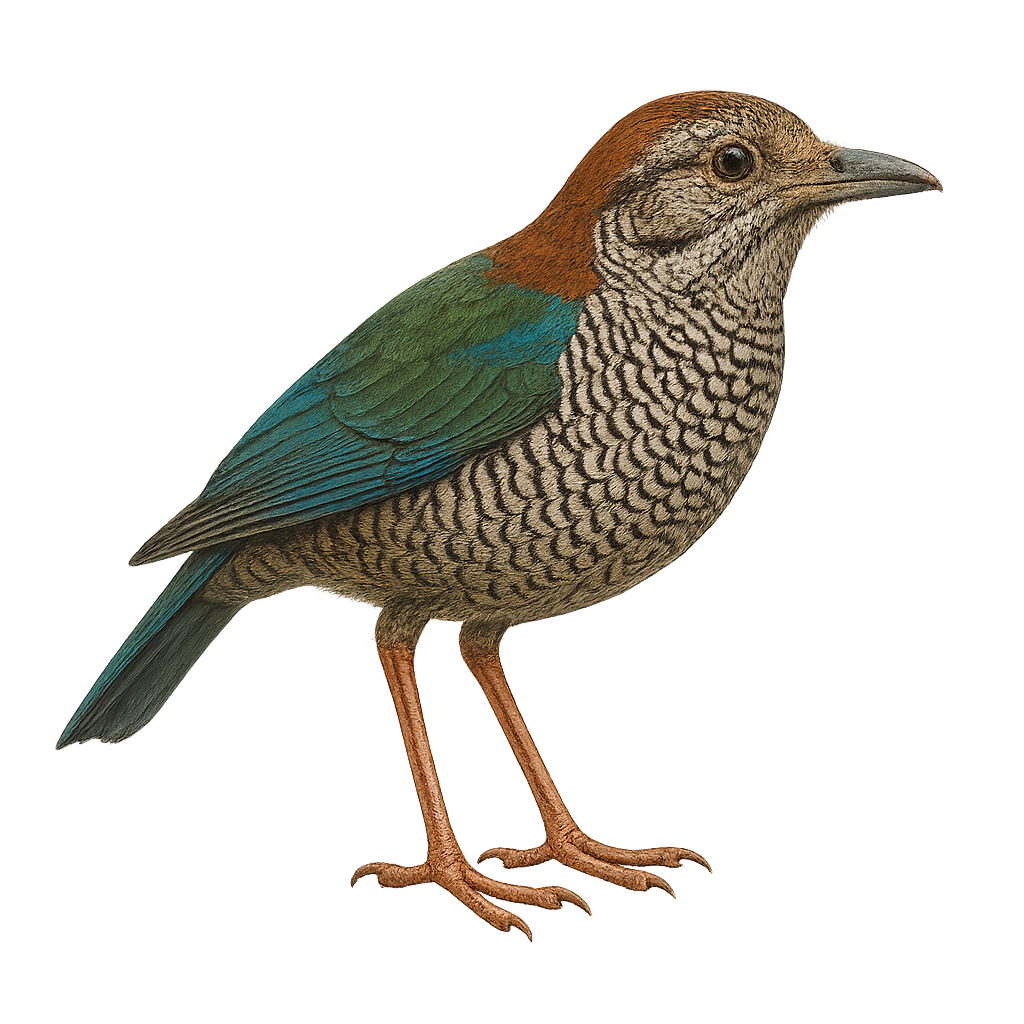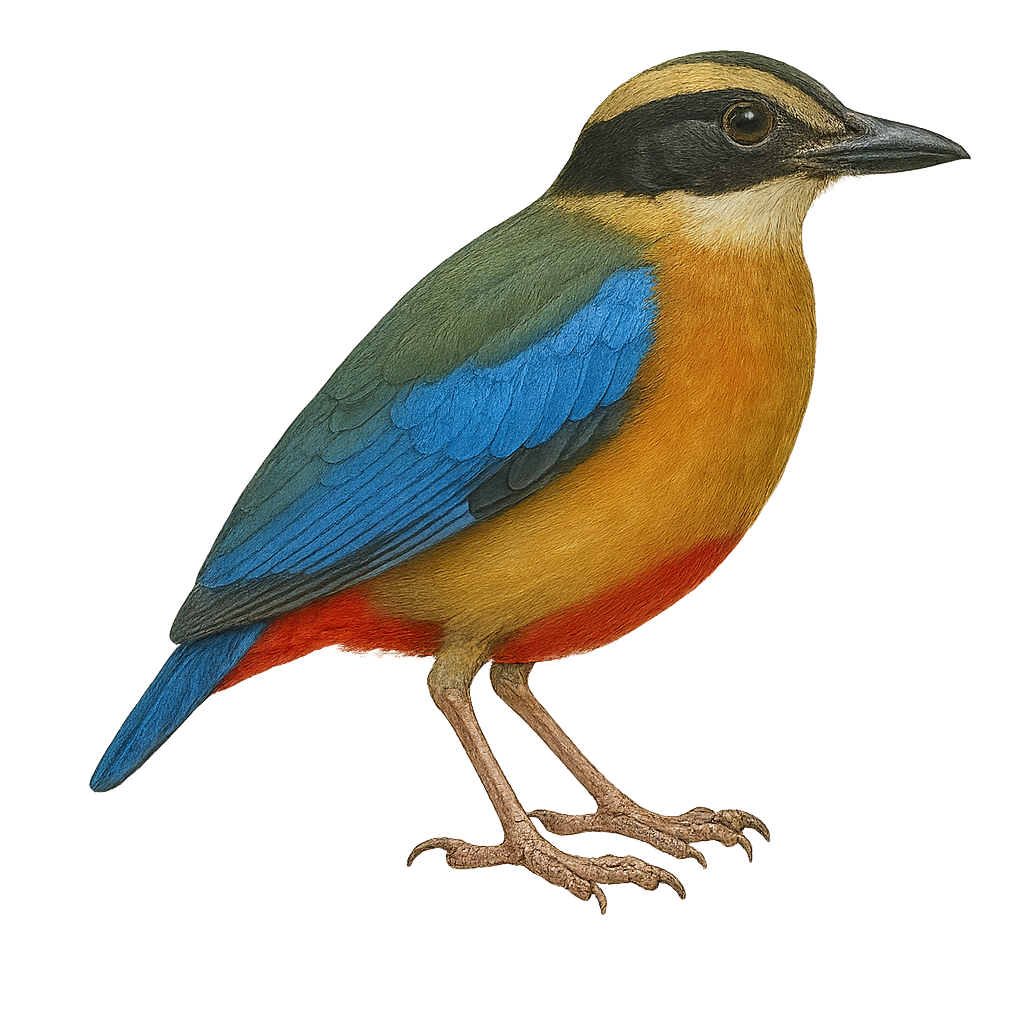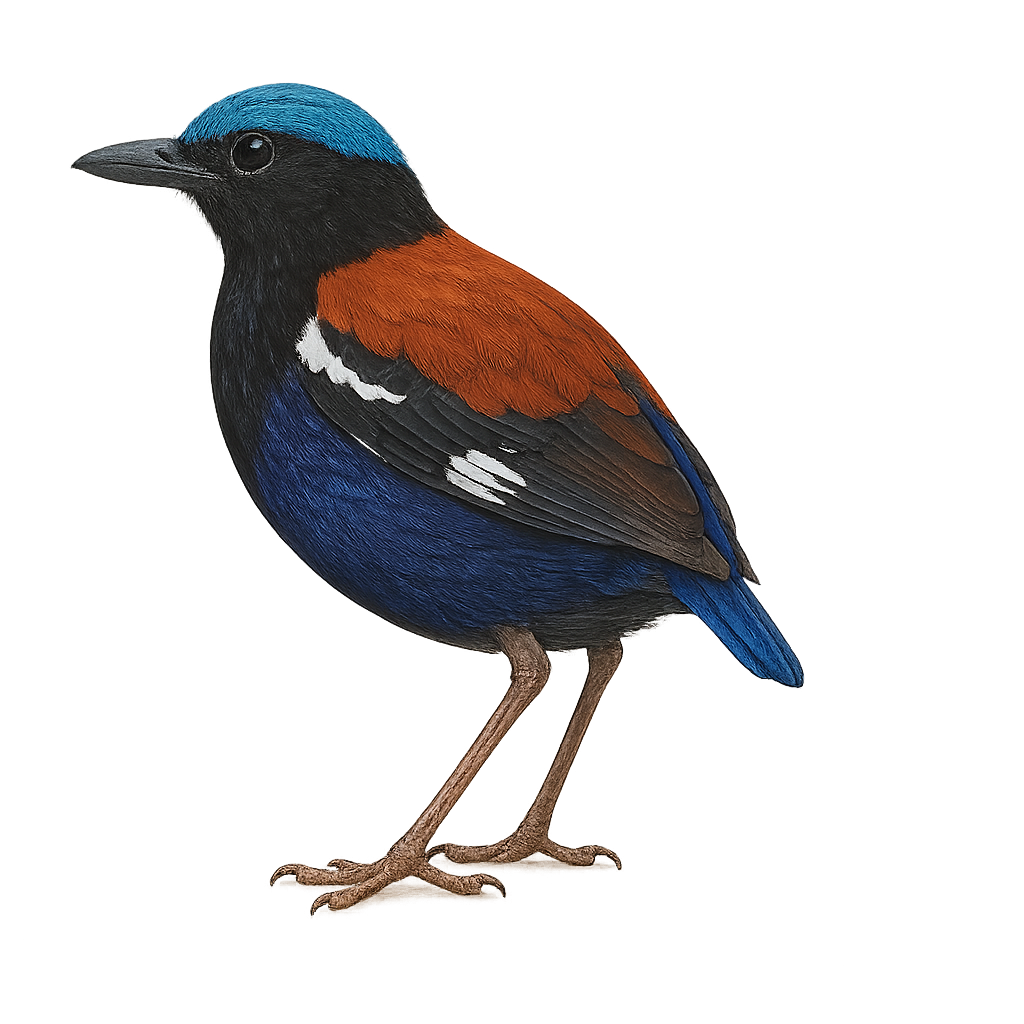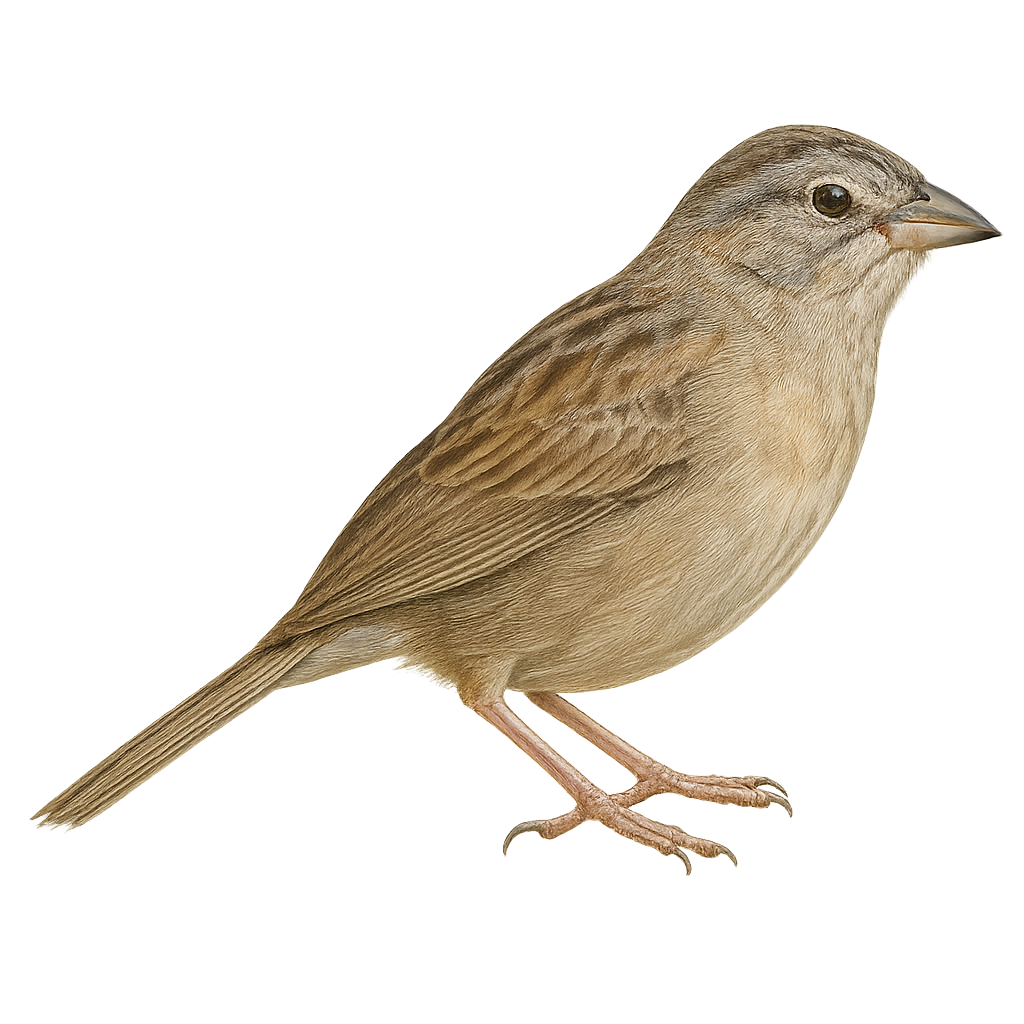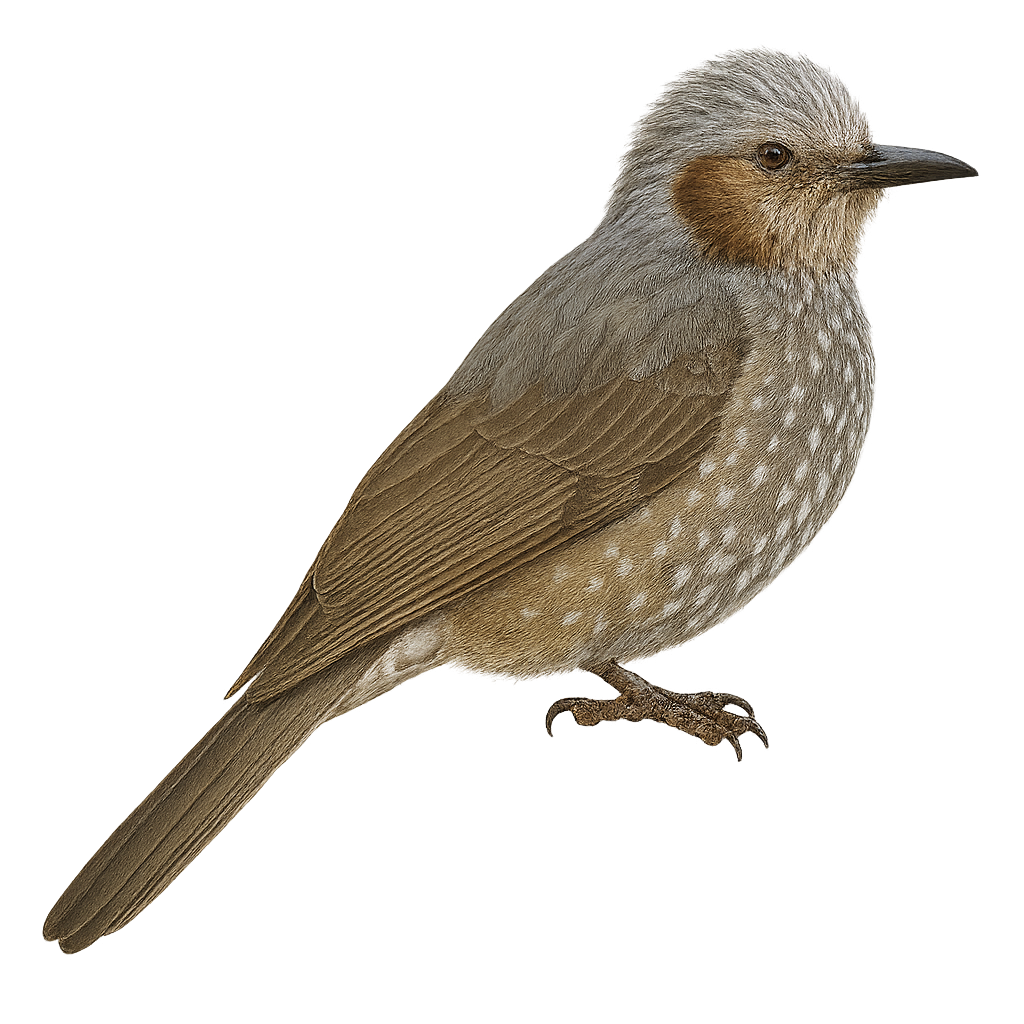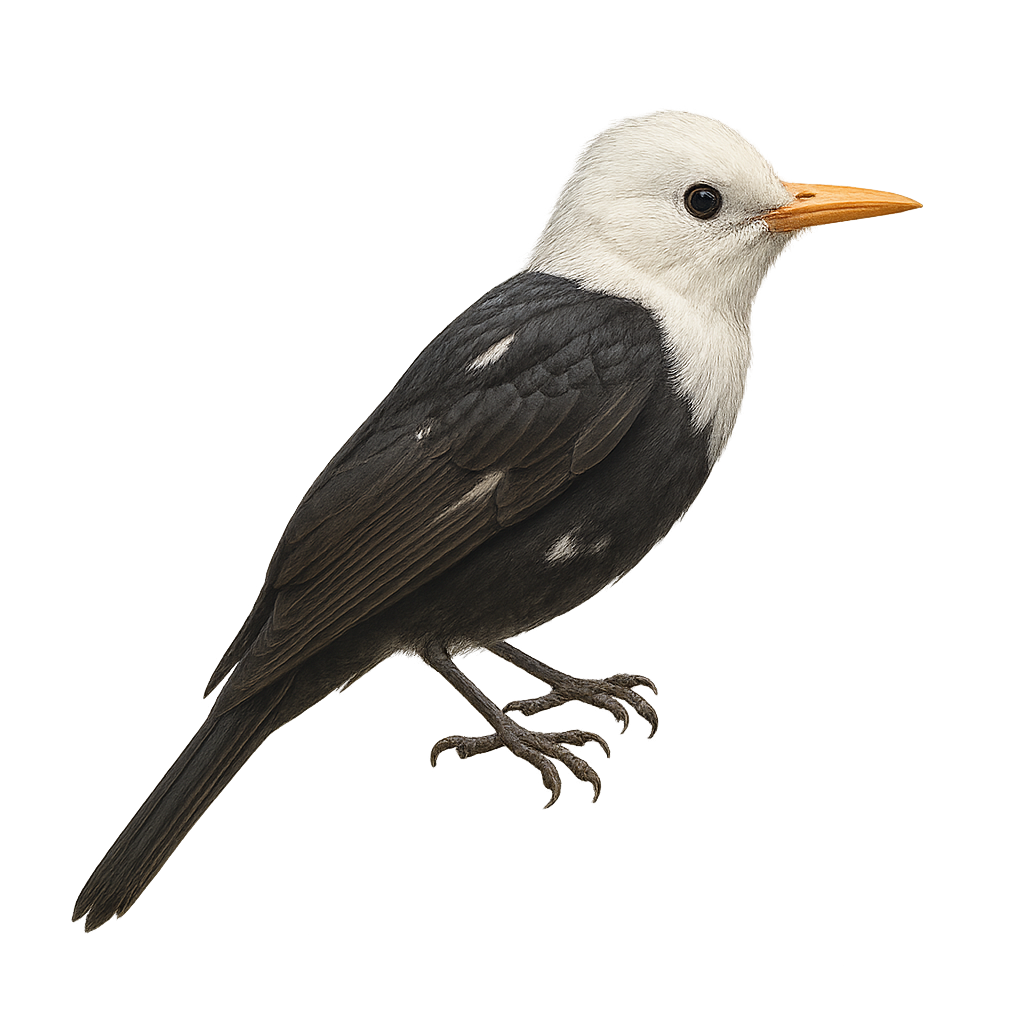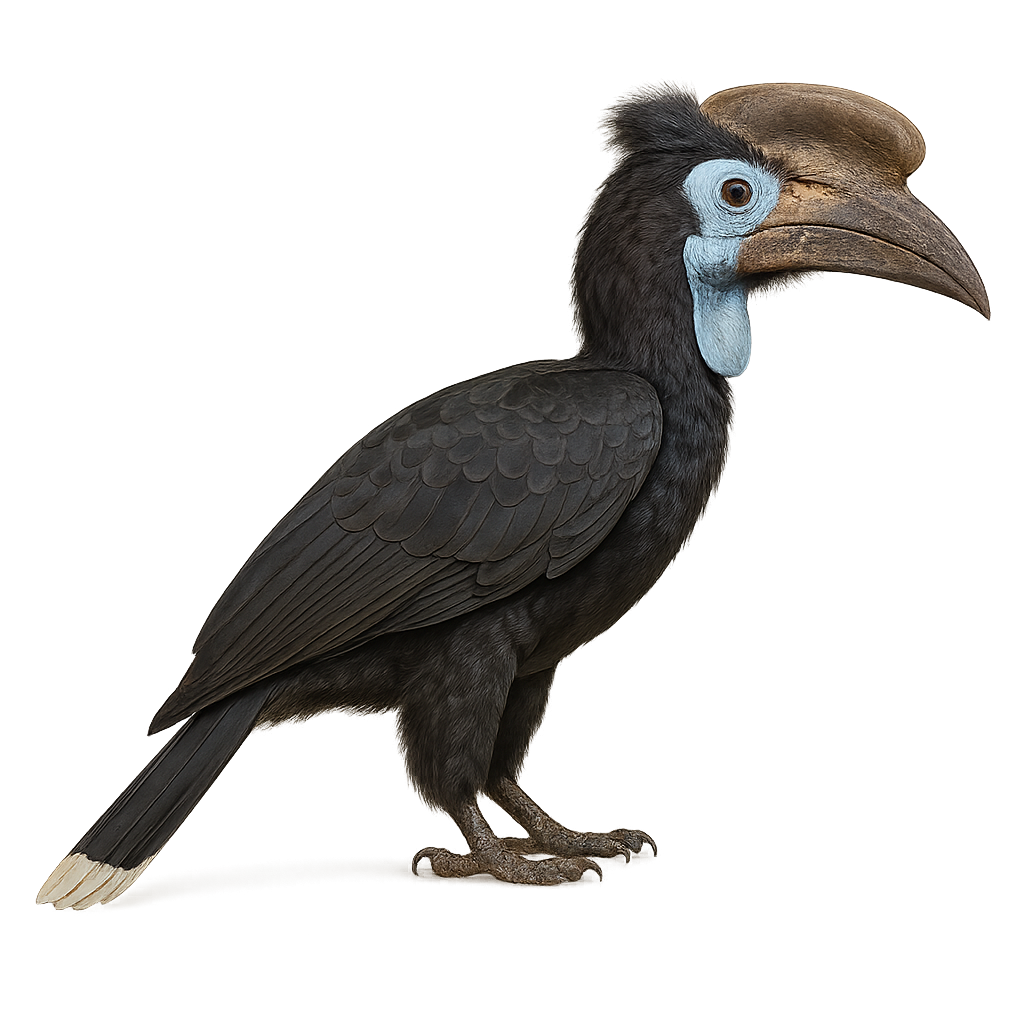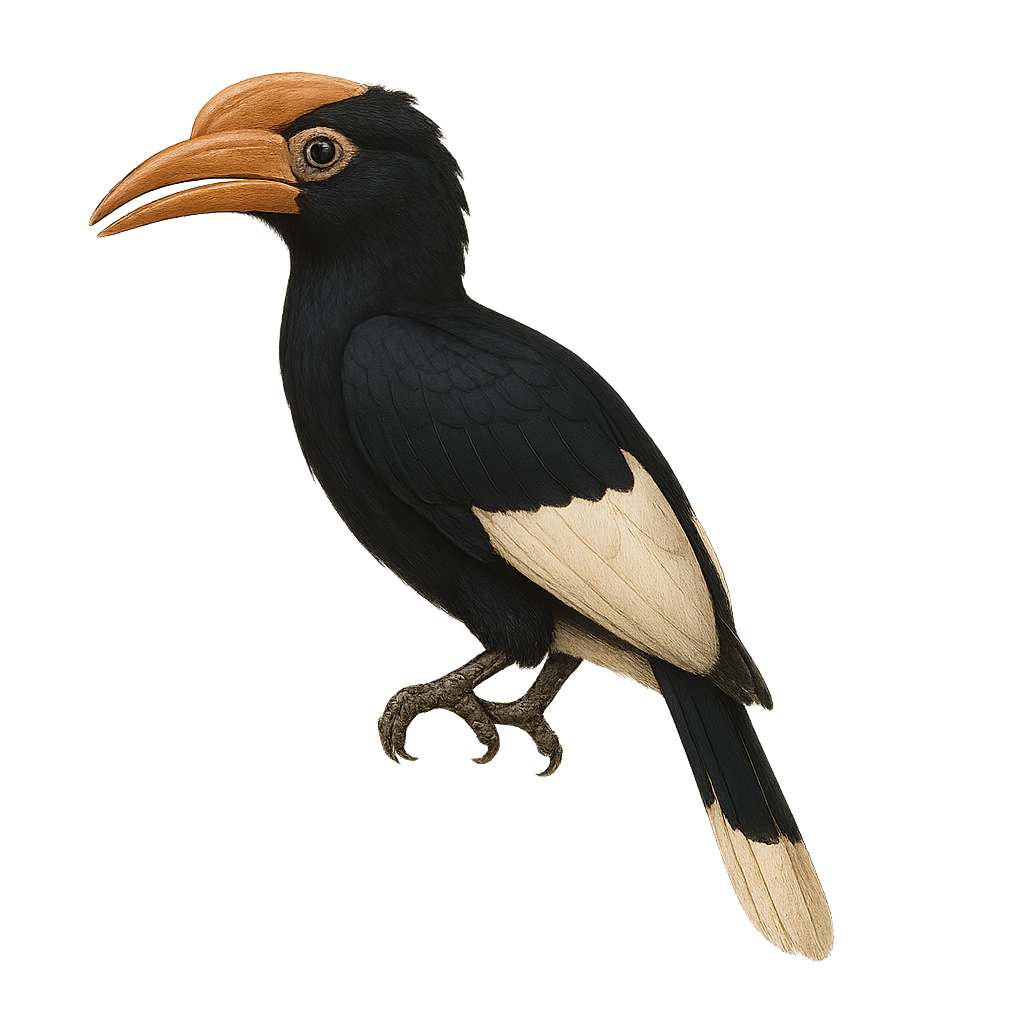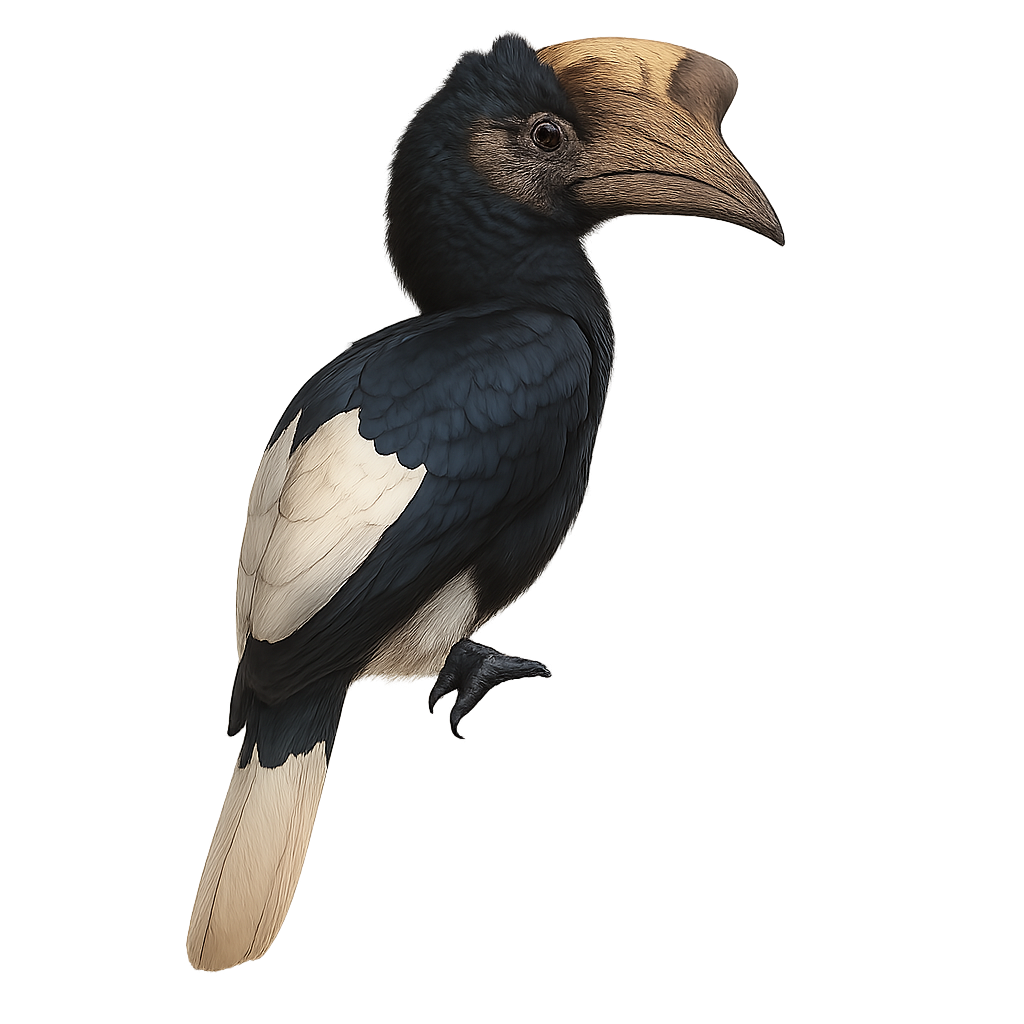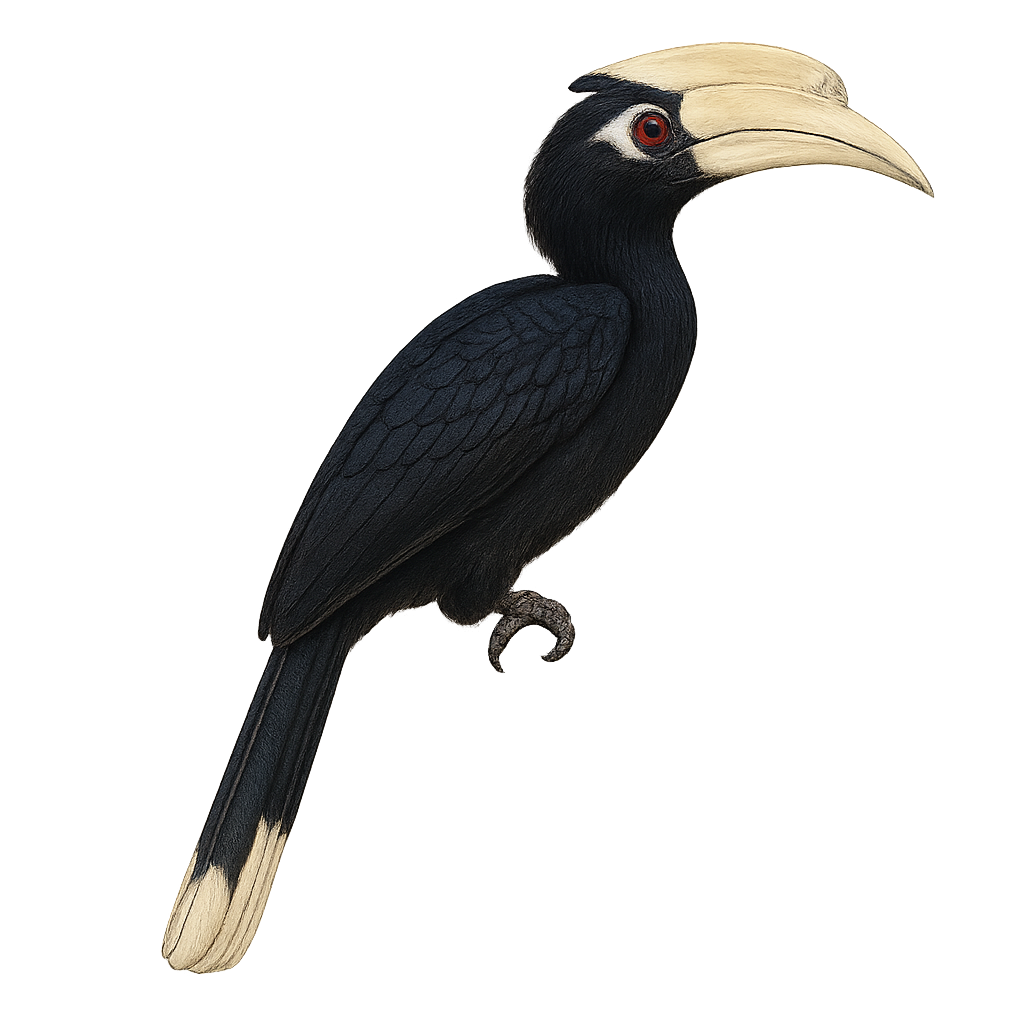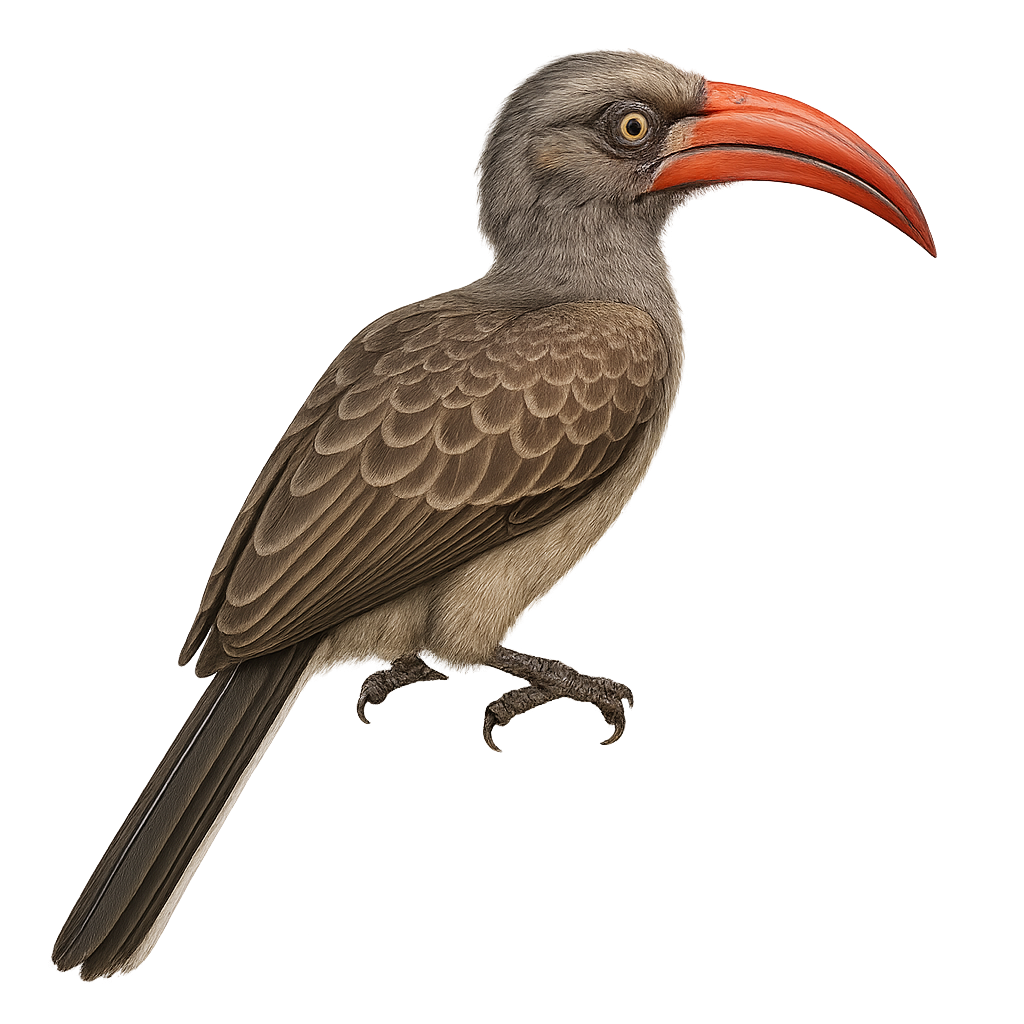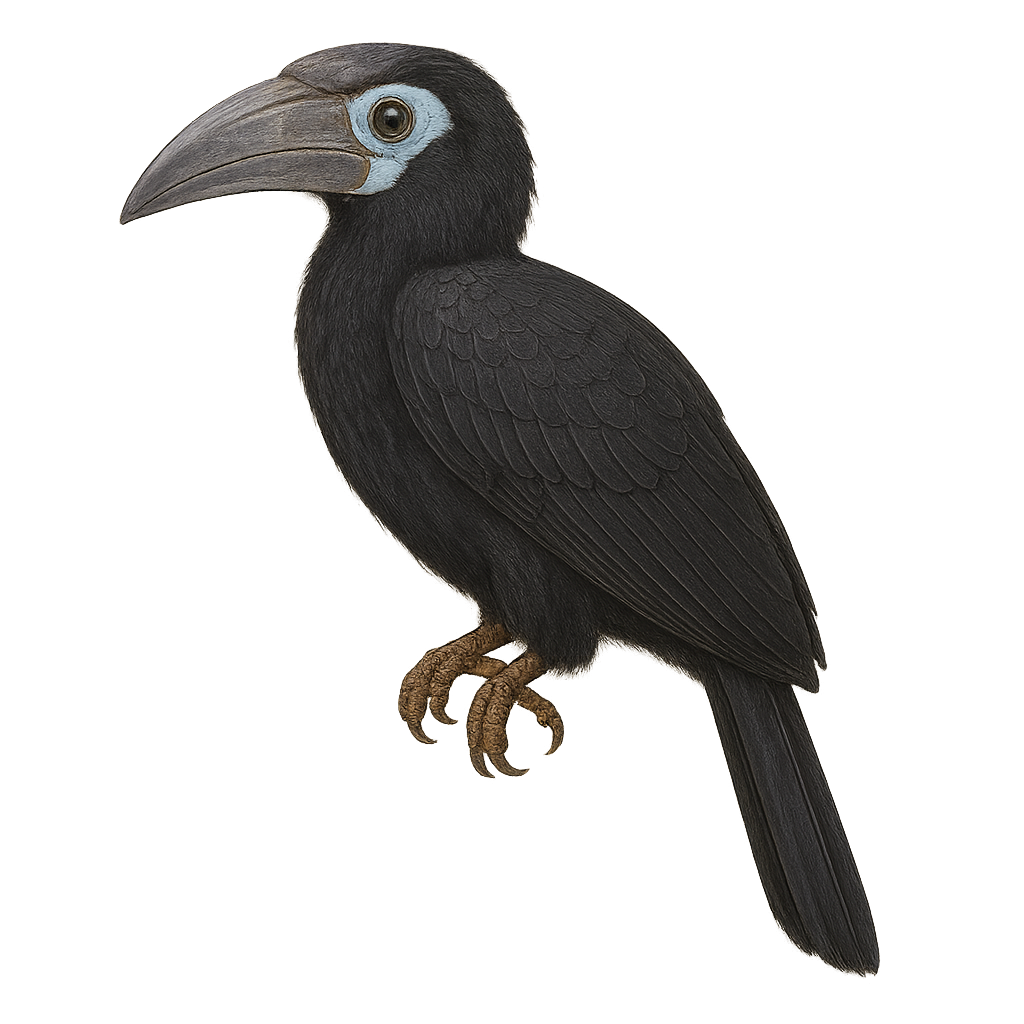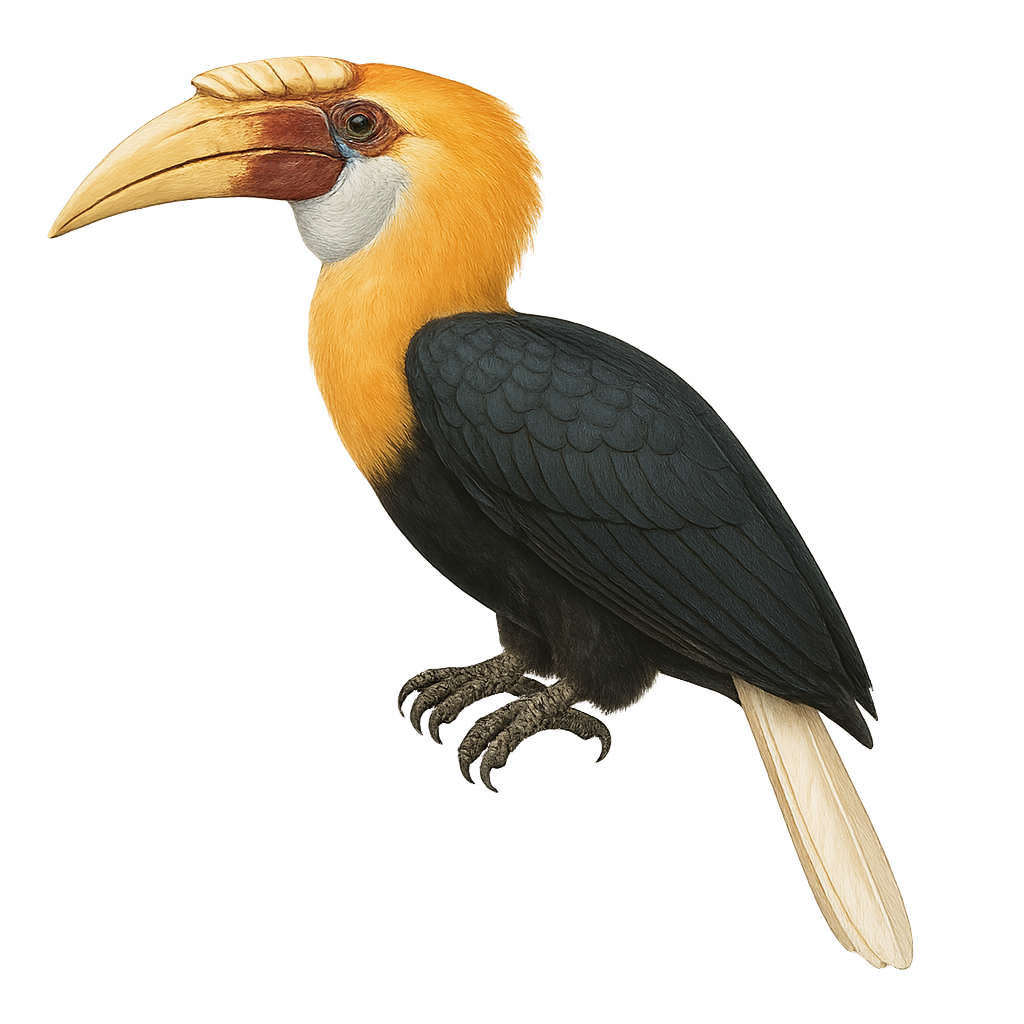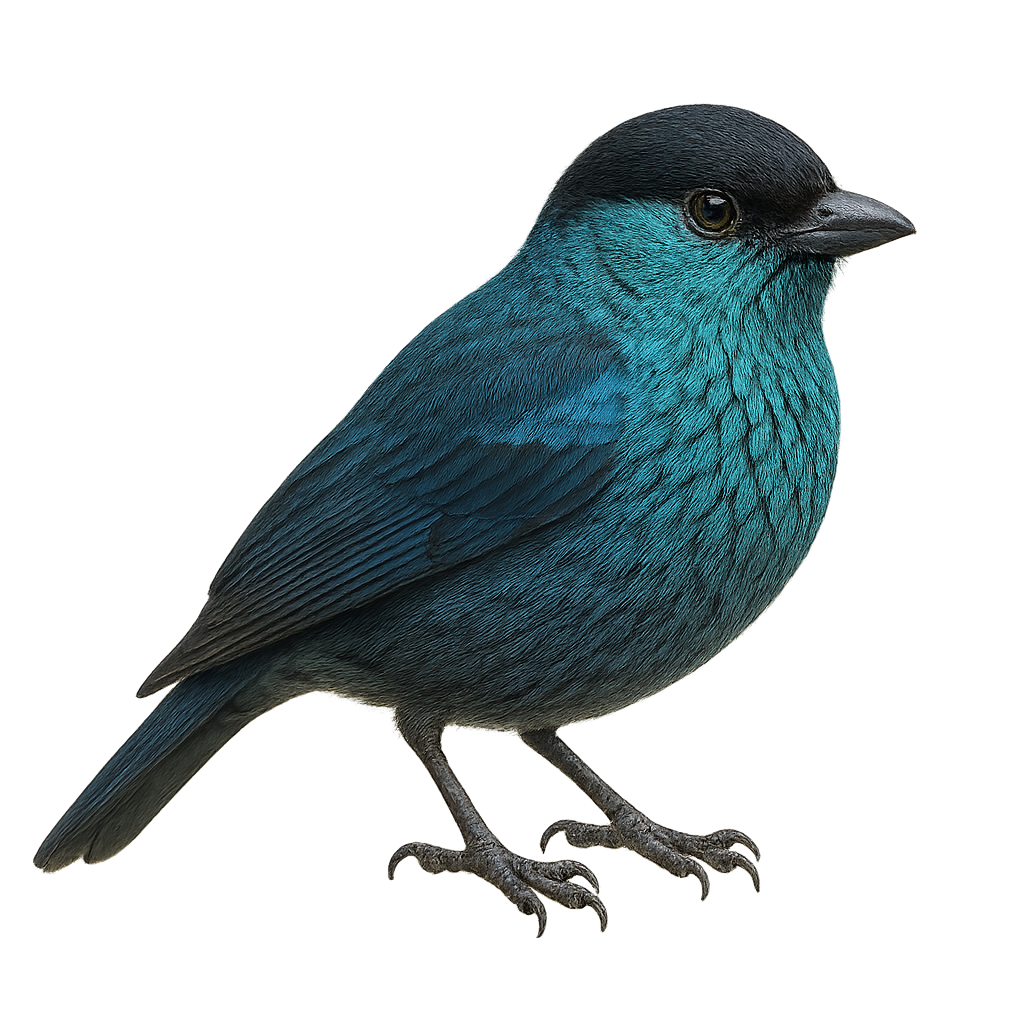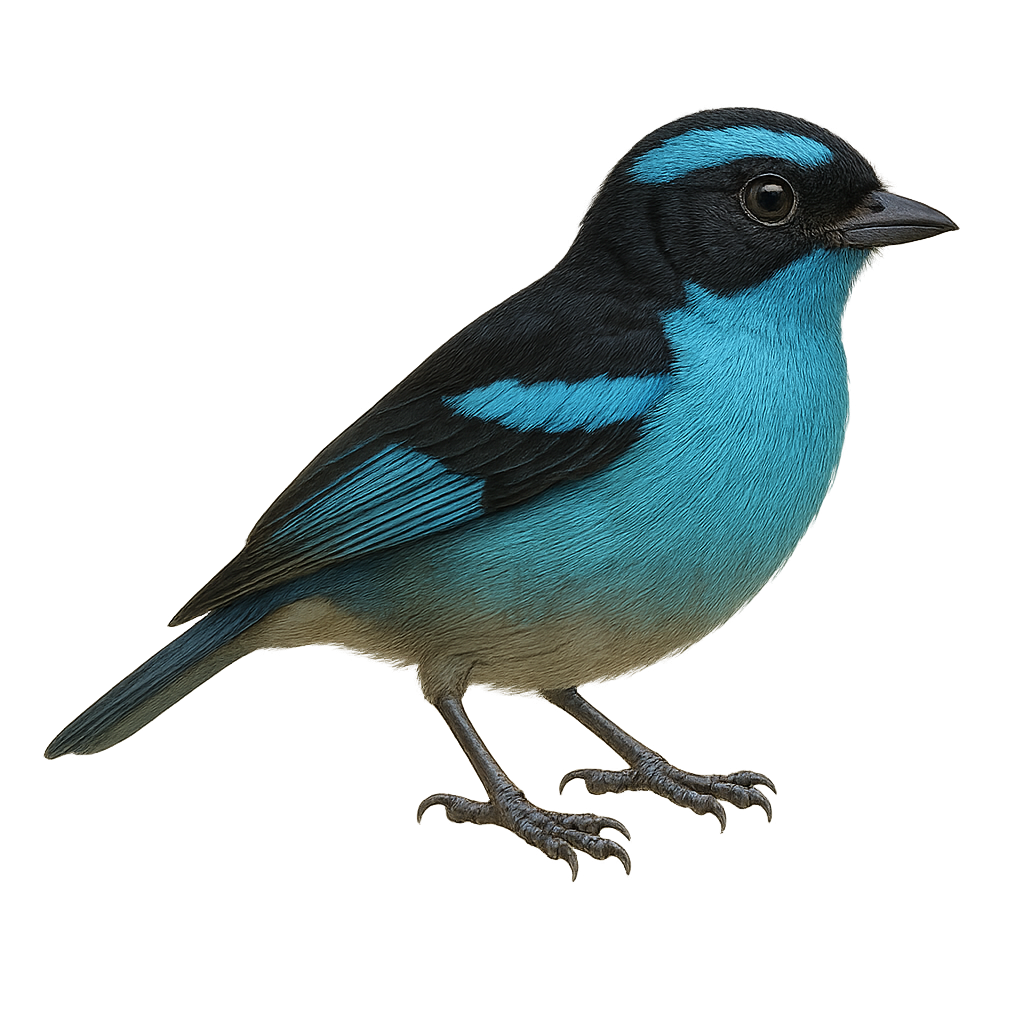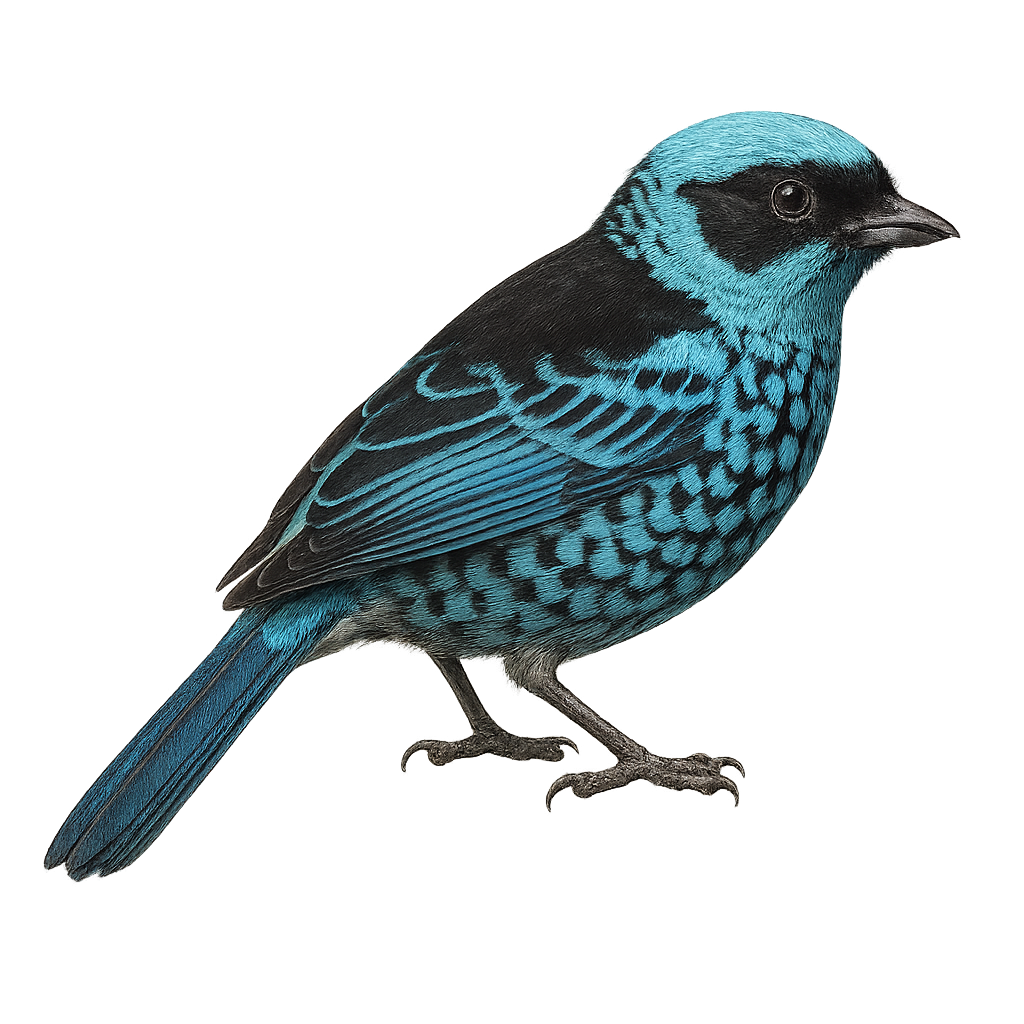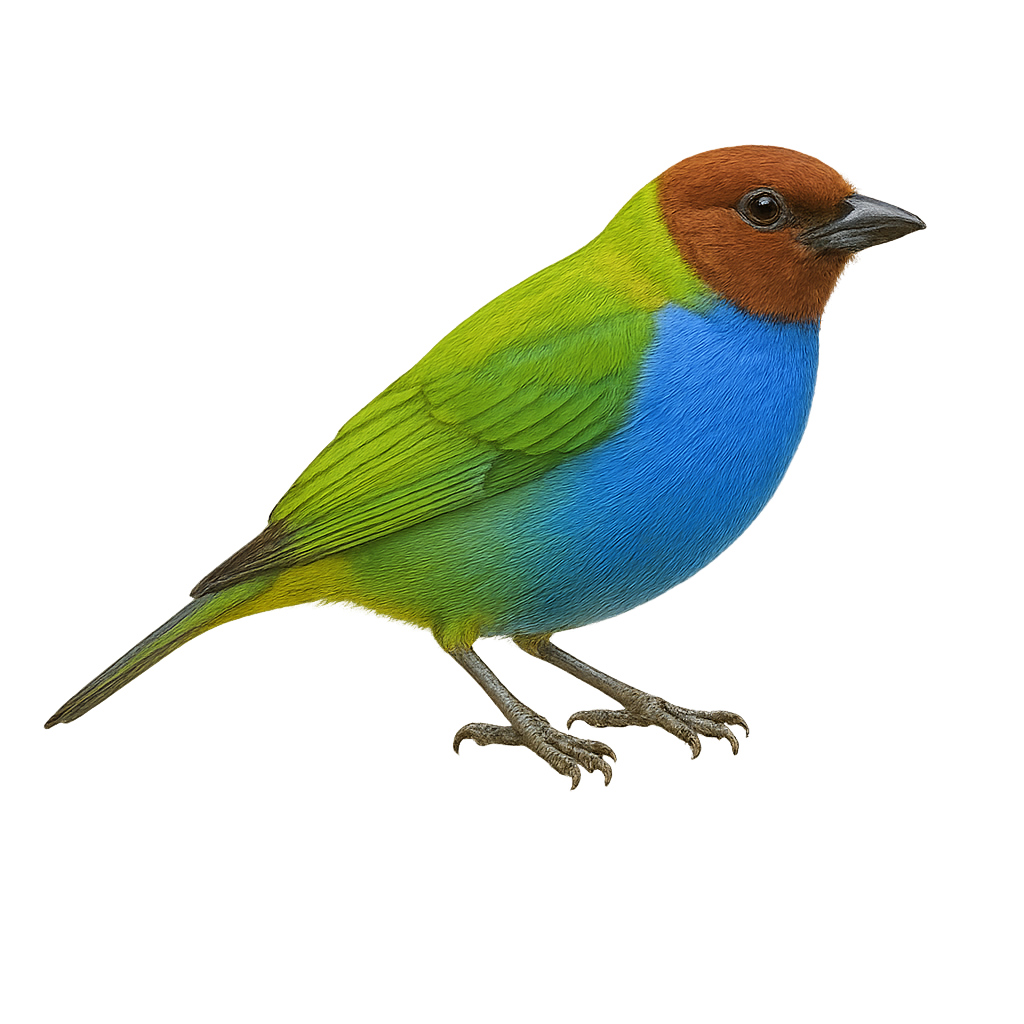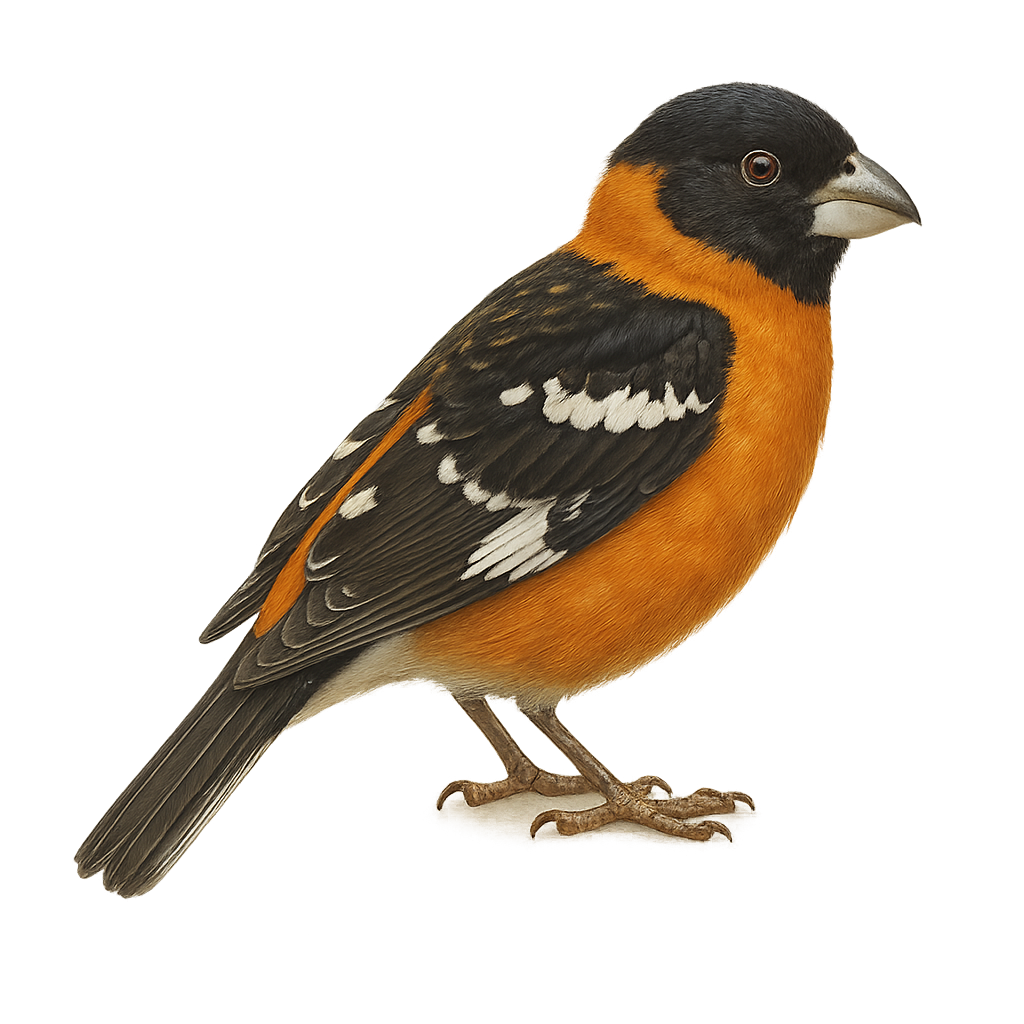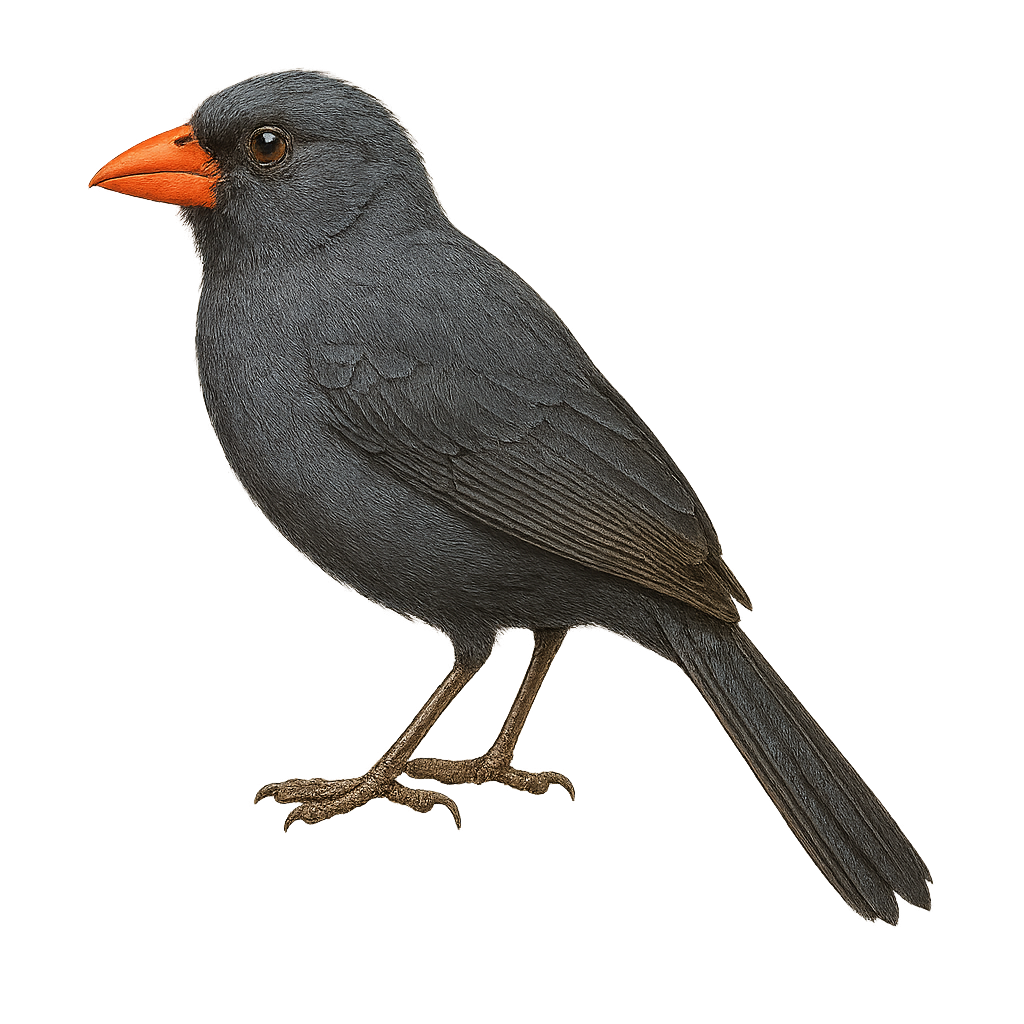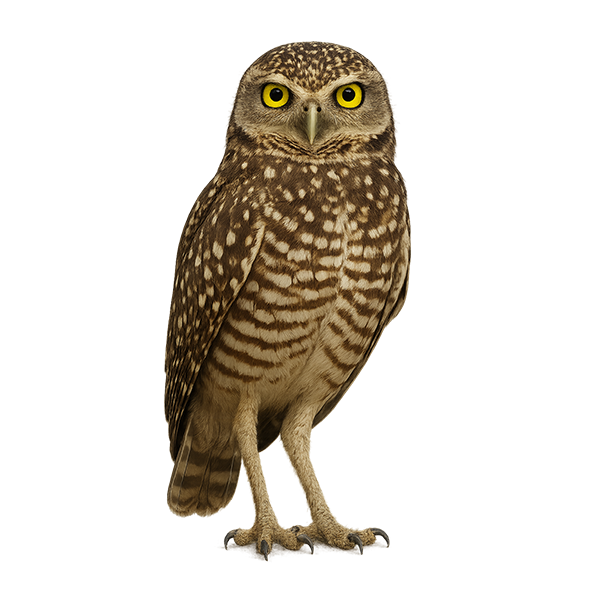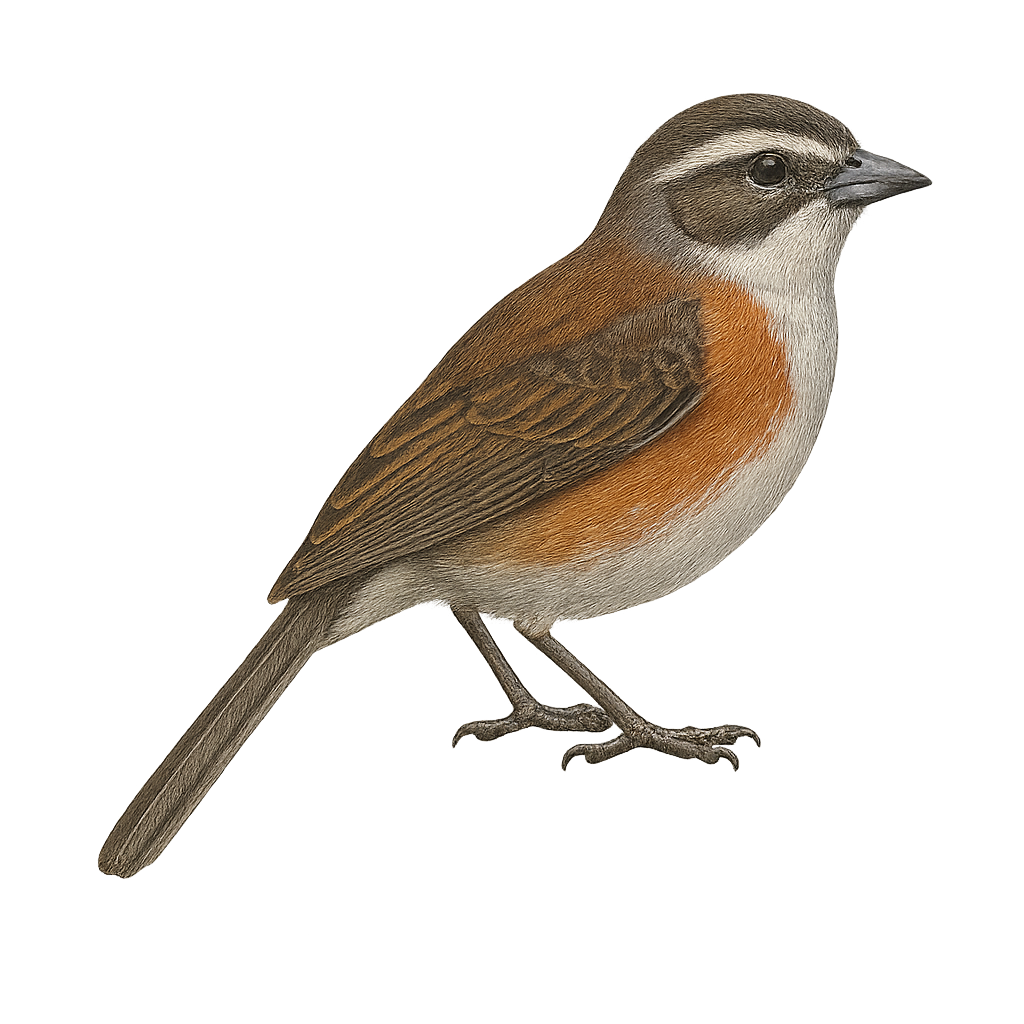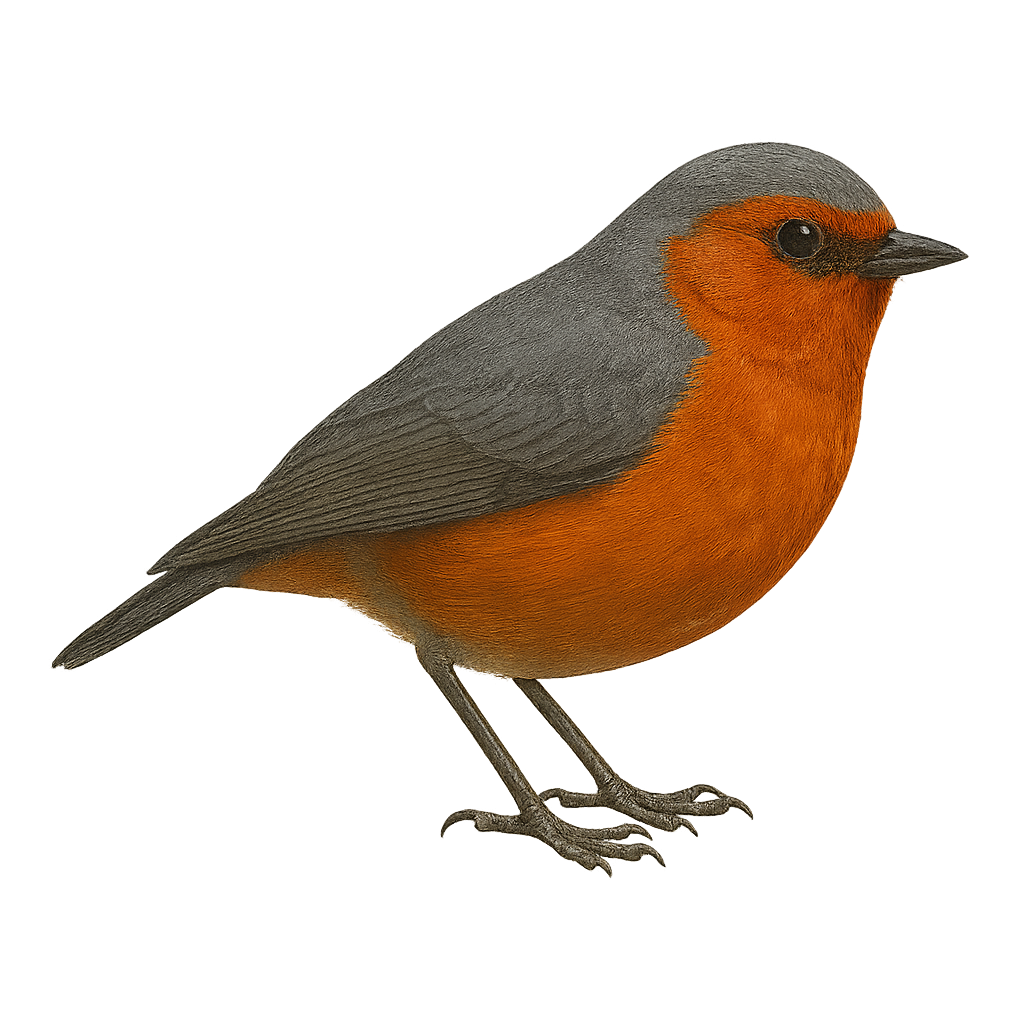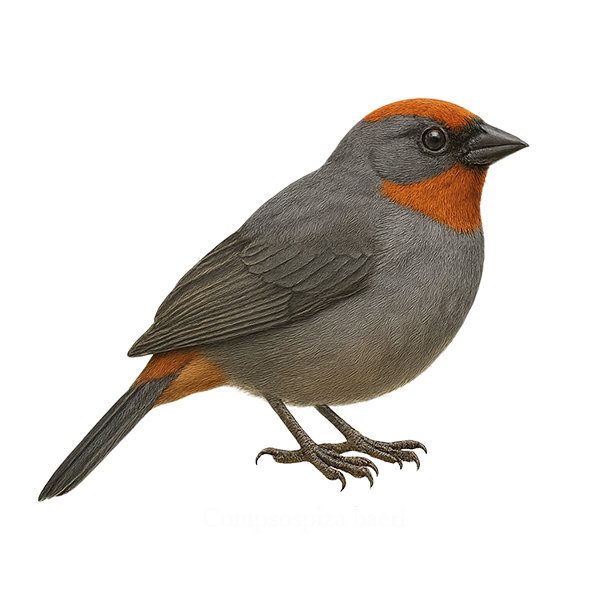The Black-crowned Night Heron is a medium-sized bird, easily recognized by its silver-gray plumage and piercing yellow eyes. It primarily inhabits marshes, estuaries, and lake shores in Europe, Asia, and North Africa. This nocturnal bird is an excellent fisherman, feeding on fish, crustaceans, and invertebrates, which it captures with its strong, pointed bill. Unlike many other aquatic birds, the Black-crowned Night Heron is primarily active at dusk, searching for food in the darkness.
The Black-crowned Night Heron is a social bird, forming colonies for breeding, but it prefers a quiet and hidden environment. While not directly threatened, it faces risks from water pollution and the destruction of its natural habitats.
The Black Bittern, or Botaurus flavicollis, is a medium-sized bird belonging to the Ardeidae family. It is primarily recognized for its dark plumage and distinctive yellow neck. This bird is often found in marshes and wetlands of South and Southeast Asia. It feeds mainly on fish, insects, and small amphibians. The Black Bittern is a discreet bird, often difficult to spot due to its stealthy behavior and plumage that blends into the surrounding reeds. It is most active at dusk and dawn, making it even harder to observe. Its population is stable, although habitat degradation could pose a potential threat.
The Black-breasted Buzzard, or Hamirostra melanosternon, is an impressive raptor native to Australia, known for its distinctive black breast and ability to crack emu eggs with stones. This bird measures about 50 to 60 cm in length with a wingspan of 1.5 meters. It primarily inhabits arid and semi-arid regions, favoring open woodlands and savannas. Its plumage is mostly dark brown with black markings on the breast and broad wings. The Black-breasted Buzzard is an opportunistic hunter, feeding on small mammals, birds, and reptiles. It is also known for its unique behavior of using stones to crack open other birds' eggs.
The Brown Mesite (Geobiastes squamiger) is a terrestrial bird endemic to Madagascar, part of the Mesitornithidae family. It is characterized by its uniform brown plumage, slightly lighter on the belly, and its white-ringed eyes. This elusive bird is primarily found in the island's dry and humid forests, where it feeds on insects and small invertebrates. The Brown Mesite is monogamous, living in pairs or small family groups. Its population is declining due to deforestation and hunting, making it vulnerable to extinction. Conservation efforts are crucial to ensure its long-term survival.
The Blue-winged Pitta, or Pitta moluccensis, is a colorful and captivating bird primarily found in Southeast Asia. It is distinguished by its vibrant plumage, with bright blue wings, a red belly, and a black head with a white stripe. Measuring about 20 cm, this bird prefers humid forests, mangroves, and wooded areas. It is often seen on the ground, searching for insects and invertebrates. Although discreet, its melodious song often gives it away. A migratory bird, it moves according to the seasons, seeking habitats conducive to its survival. Its population is stable, but deforestation poses a potential threat.
The Blue-headed Pitta, scientifically known as Hydrornis baudii, is a vibrant and elusive bird native to the tropical forests of Borneo. It is easily identified by its striking blue head and a body adorned with shades of brown and black. This small bird primarily feeds on insects and small invertebrates found in the forest litter. The Blue-headed Pitta is a solitary creature, often difficult to spot due to its secretive nature and dense habitat. Although its population is currently stable, deforestation poses a potential threat to its natural environment. Birdwatchers admire this species for its vivid colors and melodious song, though observing it often requires patience and stealth.
The Botteri's Sparrow is a small, inconspicuous bird primarily found in the grasslands and shrublands of the southern United States and Mexico. It is characterized by its dull brown plumage, which allows it to blend into its surroundings. This passerine prefers open habitats with low vegetation, where it feeds on seeds and insects. Its song, though simple, is a key aspect of its territorial behavior. During the breeding season, the male often sings from a low perch to attract a mate. Despite its modest appearance, the Botteri's Sparrow plays an essential role in the ecosystem by contributing to seed dispersal and insect population control.
The Brewer's Sparrow is a small passerine bird known for its subtle plumage and modest size. It features a brown back with dark streaks, a lighter belly, and a gray head with fine stripes. This sparrow is primarily found in the arid and semi-arid regions of western North America, where it inhabits shrublands and open grasslands. It is renowned for its melodious song, often heard during the breeding season. The Brewer's Sparrow is a migratory bird, spending its winters in the southwestern United States and northern Mexico. Although relatively common, its habitat is threatened by urban expansion and intensive agriculture.
The Brown-eared Bulbul, or Hypsipetes amaurotis, is a medium-sized bird known for its brownish ear patches and grayish plumage. It is primarily found in the forests and wooded areas of Japan, Korea, and parts of China. This bird is known for its melodious and varied song, often heard at dawn. Although relatively common in its natural habitat, it can be difficult to spot due to its wary behavior. The Brown-eared Bulbul primarily feeds on fruits, nectar, and insects, playing an important role in pollination and seed dispersal.
The Black Bulbul, Hypsipetes leucocephalus, is a medium-sized bird known for its striking white head contrasting with its dark body. It is commonly found in dense forests and wooded areas of Southeast Asia. This bird is renowned for its melodious song and its adaptability to various habitats, including urban gardens. It primarily feeds on fruits, insects, and nectar, playing a crucial role in pollination and seed dispersal. Although usually solitary, it can form small groups when foraging. Its ability to adapt to different environments makes it a resilient species in the face of environmental changes.
The Black-spotted Barbet, or Capito niger, is a bird from the Capitonidae family, primarily found in the humid tropical forests of South America. It is characterized by its glossy black plumage, accented with white spots on the wings and belly. This bird measures about 18 cm in length and has a sturdy beak, suited for its diet mainly consisting of fruits, insects, and small invertebrates. The Black-spotted Barbet is often seen in pairs or small groups, actively moving through the canopy in search of food. Although its habitat is threatened by deforestation, it is currently classified as Least Concern by the IUCN.
The Black-casqued Hornbill, or Ceratogymna atrata, is a large hornbill from the equatorial forests of Central and West Africa. It is recognized by its glossy black plumage, white belly, and massive black bill topped with a broad dark casque, especially prominent in males. It inhabits dense tropical forests from Nigeria to western Uganda. An arboreal species, it lives mostly in the canopy, feeding on fruits, seeds, and small animals. Often seen in pairs or family groups, the Black-casqued Hornbill is threatened by deforestation and hunting, and is currently listed as Near Threatened.
The Brown-cheeked Hornbill, or Bycanistes cylindricus, is a large hornbill of the humid forests of West Africa, recognizable by its black-and-white plumage, brownish cheeks, and large ivory bill with a prominent casque. It inhabits lowland tropical forests, forest edges, and transitional zones, mainly in Guinea, Sierra Leone, Ivory Coast, and Ghana. Often seen in pairs or small groups, it flies noisily through the canopy. It feeds on fruits—especially figs—as well as insects and small animals. Classified as Near Threatened, the Brown-cheeked Hornbill is particularly vulnerable to increasing deforestation.
The Black-and-white-casqued Hornbill, or Bycanistes subcylindricus, is a striking bird known for its distinctive appearance and behaviors. This large hornbill features contrasting black and white plumage and a prominent casque, which helps amplify its calls. It primarily inhabits the tropical rainforests of Central and West Africa, playing a crucial role in seed dispersal due to its mainly frugivorous diet. Social by nature, it often lives in small family groups and shows some tolerance to human presence. However, deforestation and hunting threaten its natural habitat, making its conservation vital.
The Black Hornbill, or Anthracoceros malayanus, is a medium-sized hornbill native to the tropical forests of Southeast Asia, especially in Malaysia, Borneo, and Sumatra. It is recognized by its glossy black plumage, white belly, and large ivory bill topped with a flattened black casque. This hornbill inhabits lowland primary forests and is usually seen in pairs or small groups. Its diet consists mainly of fruits—especially figs—but also includes insects, lizards, and occasionally small birds. Though often quiet and elusive, the Black Hornbill is threatened by deforestation and is currently listed as Vulnerable.
The Bradfield's Hornbill, or Lophoceros bradfieldi, is a striking bird known for its large bill and slender silhouette. It features predominantly grey plumage with shades of white and black, and its bill is often adorned with red. This bird is primarily found in the arid and semi-arid regions of southwestern Africa, notably in Namibia, Botswana, and Angola. It prefers dry savannas, open woodlands, and bushy areas. The Bradfield's Hornbill is a diurnal bird, often seen in small groups or pairs. It feeds mainly on insects, small reptiles, and fruits. Although its conservation status is currently "least concern," monitoring its habitat is crucial for its continued survival.
The Bushy-crested Hornbill, or Anorrhinus galeritus, is a medium-sized hornbill found in the tropical forests of Southeast Asia, including Malaysia, Thailand, Borneo, and Sumatra. It is identified by its dark brown plumage, pale underparts, and ivory bill lacking a prominent casque. Highly social, it forms noisy family groups that move actively through the canopy in search of fruits, insects, and small animals. The Bushy-crested Hornbill inhabits lowland forests and can also be found in degraded areas. Though still locally common, it is threatened by ongoing deforestation.
The Blyth's Hornbill, or Rhyticeros plicatus, is a striking bird known for its large size and distinctive plumage. It features a massive, curved bill often adorned with bright colors. Males and females exhibit marked sexual dimorphism, with males typically having larger bills and more vibrant colors. This bird is primarily arboreal, found in the tropical forests of New Guinea and surrounding islands. It plays a crucial role in seed dispersal, aiding forest regeneration. The Blyth's Hornbill is also known for its powerful and noisy flight, often seen in small groups.
The Black-capped Tanager is a medium-sized bird with vibrant plumage ranging from blue to green, and a distinctive black cap on its head. Native to the humid forests and wooded areas of the Andes, this bird is often seen in small groups, feeding primarily on fruits and insects. Its melodious song and bright colors make it a favorite among birdwatchers. Although it is relatively tolerant of human presence, it prefers dense areas where it can easily hide. Its breeding season typically coincides with the rainy season, ensuring an abundance of food for the young.
The Blue-necked Tanager, scientifically known as Stilpnia cyanicollis, is a vibrant bird belonging to the Thraupidae family. It is easily identifiable by its striking blue head and neck, contrasting with a black body and green wings. This bird measures about 13 cm in length and weighs between 16 and 19 grams. It is primarily found in the humid tropical forests of South America, particularly in Colombia, Peru, Bolivia, and Brazil. The Blue-necked Tanager feeds mainly on fruits, nectar, and insects. It is often seen in small groups or pairs, actively moving through the canopy in search of food.
The Blue-browed Tanager, or Tangara cyanotis, is a small, colorful bird of the Amazonian tropical rainforests, easily recognized by its bright blue eyebrow contrasting with a black head and vivid green body. It is mainly found in the Amazon Basin, particularly in Peru, Bolivia, and western Brazil. It forages in small flocks in the canopy, feeding on fruits, nectar, and insects. Though not shy, it remains discreet, and its vibrant colors make it a favorite among birdwatchers. The species is considered stable.
The Black-backed Tanager is a colorful and fascinating bird native to the tropical forests of South America. It is distinguished by its vibrant plumage, mixing shades of green, black, and blue. This small passerine is often observed in groups, moving agilely through the canopy in search of fruits and insects. Its melodious and varied song adds a musical touch to its natural environment. Although primarily arboreal, it occasionally descends to the ground to feed. Its presence is an indicator of the health of tropical forests, as it relies on plant diversity for survival.
The Blue-backed Tanager, or Tangara vassorii, is a colorful and fascinating bird primarily found in the humid forests of the Andes. This small passerine is recognizable by its bright plumage, with a vivid blue back contrasting with a paler belly. Males and females display similar colors, although females are slightly less vibrant. These birds are often seen in small groups, feeding on fruits and insects. Their melodious song adds a musical touch to their natural environment. Although relatively common in their habitat, observing them often requires patience due to their wary nature and preference for dense, wooded areas.
The Bay-headed Tanager, scientifically known as Tangara gyrola, is a vibrant bird native to the tropical forests of Central and South America. It is easily identified by its striking green head, which contrasts with its body adorned in shades of blue, red, and yellow. This bird measures about 14 cm in length and weighs between 19 and 22 grams. Its diet consists mainly of fruits, but it also consumes insects and nectar. Bay-headed Tanagers live in small groups and are often seen actively moving through the canopy. Their song is a soft warble, and they play a crucial role in seed dispersal, aiding forest regeneration.
The Black-headed Grosbeak is a medium-sized songbird known for its striking black head and contrasting orange and white body. It primarily inhabits coniferous forests and open woodlands in North America. Its melodious song is often likened to that of a robin. This migratory bird feeds mainly on seeds, fruits, and insects, playing a crucial role in seed dispersal and insect population control. Its breeding season spans from spring to summer, during which it builds nests in trees or shrubs.
The Black-throated Saltator is a medium-sized bird belonging to the Thraupidae family. It is primarily found in the humid forests and wooded areas of South America, particularly in Brazil, Argentina, and Paraguay. This bird is characterized by its dark plumage, with a black throat contrasting with its lighter belly. The Black-throated Saltator is mainly granivorous, but it also feeds on insects and small fruits. It is often observed in pairs or small groups, actively moving through the canopy in search of food. Although not considered threatened, deforestation and habitat loss could impact its populations in the long term.
The Burrowing Owl, Athene cunicularia, is a small owl with brown plumage speckled with white, primarily inhabiting the grasslands, deserts, and agricultural areas of the Americas. Unique among owls, it nests in underground burrows, often dug by other animals like prairie dogs. Measuring about 20 to 25 cm in height, it has long legs that allow it to run swiftly on the ground. Its diet is varied, including insects, small mammals, and sometimes reptiles. Although diurnal, it is most active at dusk and dawn. This species is known for its adaptability to different environments, though habitat loss remains a threat.
The Bolivian Brushfinch, scientifically known as Poospiza boliviana, is a medium-sized bird belonging to the Thraupidae family. It is primarily endemic to the mountainous regions of Bolivia, where it inhabits humid forests and shrublands. Its plumage is a mix of gray, brown, and white, with distinctive markings on the head and wings. This bird is often seen in small groups, feeding mainly on insects and seeds. Its ability to adapt to various habitats makes it a resilient species, although deforestation poses a potential threat to its populations. The Bolivian Brushfinch is a fascinating bird to observe, especially due to its melodious song and interesting social behaviors.
The Bolivian Warbling Finch is a bird endemic to the Bolivian Andes, known for its distinctive plumage and melodious song. This medium-sized passerine features gray and brown hues, with lighter shades on its belly. It primarily inhabits shrublands and cloud forests, where it feeds on seeds and insects. Though discreet, it is often detected by its characteristic song. Its population is currently stable, but it remains vulnerable to environmental changes and deforestation. Conservation efforts are crucial to preserving its natural habitat and ensuring its long-term survival.
The Baer's Sparrow, or Poospiza baeri, is a small passerine bird belonging to the Thraupidae family. It is primarily found in the mountainous regions of South America, particularly in Argentina. This sparrow is characterized by its subtle plumage, often in shades of brown and gray, allowing it to blend into its natural habitat. It mainly inhabits high-altitude shrublands and open grasslands. Its song is melodious yet discreet, often heard before being seen. The Baer's Sparrow is a relatively suspicious bird, preferring to keep its distance from humans.




